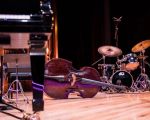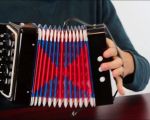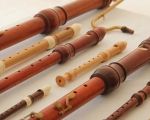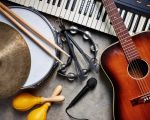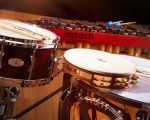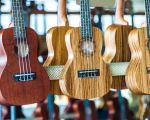The Origins of Music: When Was the First Musical Instrument Made?
As a lover of music and history, I’ve always been fascinated by how music evolved over time. One question that often pops up in my mind—and perhaps in yours as well—is: when was the first musical instrument made? The idea of music as a form of expression has existed for as long as humanity itself. But what was the very first musical instrument, and how did it come to be? In this article, we will explore the history of musical instruments, tracing their origins back to the earliest known examples, and how they have influenced the music we listen to today.
1. The Birth of Music: A Natural Expression of Sound
Before delving into the first musical instrument, it's important to understand how music might have started. Imagine our early ancestors, sitting around the fire, tapping on rocks or branches. Music probably began as a form of communication or expression of emotions. For centuries, scholars have debated how humans first started producing sounds that would later evolve into music.
1.1 The Role of Nature in Early Music
Nature itself played a huge role in the creation of early musical sounds. The wind whistling through trees, the rhythm of rain hitting the ground, and even the sounds of animals all contributed to the earliest forms of music. Humans began to replicate these sounds, creating primitive instruments that mimicked the natural environment. The first sounds, likely produced by vocalizations or simple objects like sticks and rocks, were probably rhythmic and percussive.
2. The First Known Musical Instruments
Fast forward thousands of years, and humans began creating more structured forms of music. The first recorded musical instruments are believed to have appeared around 40,000 years ago. Archaeological evidence suggests that early humans crafted flutes from bones and ivory, creating the earliest known wind instruments.
2.1 The Discovery of the Oldest Flute
The oldest known musical instrument is the flute, with the most famous example being the “Divje Babe flute” found in Slovenia. This flute, made from the femur of a cave bear, is estimated to be around 43,000 years old. The flute is an important discovery because it represents one of the earliest instances of humans shaping materials to create sound, indicating that music was becoming an important part of human life.
2.2 Early Percussion Instruments
Alongside wind instruments, early humans also developed percussion instruments. These included simple drums made from animal skins and other materials. These instruments were essential for rhythmic expression in early music. In fact, percussion instruments are likely some of the first musical tools to be developed, as they can be made with materials readily available in nature, like stones, sticks, and bones.
3. How Did Early Instruments Influence Modern Music?
The earliest instruments were not just about making noise—they were an essential part of communication, culture, and ritual. Over the centuries, these primitive tools evolved into more sophisticated musical instruments, leading to the creation of the wide variety of instruments we know today. The development of stringed instruments, such as the harp and lyre, added melody to the rhythmic sounds of percussion, and wind instruments developed further into instruments like the flute, clarinet, and trumpet.
3.1 The Evolution of Musical Instrument Materials
Early instruments were made from natural materials, but as civilizations advanced, so did the materials used in instrument making. Metals like bronze and brass began to replace animal bones and wood, allowing for instruments that could create richer, more varied sounds. This evolution in materials enabled the creation of instruments with greater pitch range and sound quality, shaping the way modern orchestras and bands sound today.
3.2 The Role of Music in Ancient Cultures
In many ancient cultures, music played a role in religious and ceremonial contexts. The Egyptians, Greeks, and Romans all used music in their temples, ceremonies, and entertainment. The Egyptians, for example, are known to have used instruments like the harp and lyre in religious rituals. As these instruments and their uses evolved, music became more intertwined with social life, eventually leading to the creation of concert halls and music as we know it today.
4. The Development of Modern Musical Instruments
As societies progressed, so did the complexity of their musical instruments. The 15th and 16th centuries saw the rise of classical instruments like the violin and piano, which are still staples in today's orchestras. These instruments, with their carefully crafted structures and precise tunings, allow for a range of emotional expression that simple drums and flutes could never achieve.
4.1 The Piano and Its Impact on Music
The piano, first developed in the early 18th century, revolutionized music. Unlike earlier keyboard instruments, the piano allowed for both melody and harmony to be played simultaneously, creating a fuller, more dynamic sound. Famous composers like Mozart, Beethoven, and Chopin used the piano to compose some of the most iconic pieces of music in history.
5. The Future of Musical Instruments
Today, the world of musical instruments continues to evolve. With advancements in technology, electronic instruments have become increasingly popular. Instruments like synthesizers, electric guitars, and digital pianos have expanded the boundaries of music, allowing musicians to explore new sounds and textures. The future of music is likely to be a blend of traditional instruments and cutting-edge technology.
5.1 The Role of Technology in Music Innovation
As digital technology continues to advance, we’re likely to see more instruments that combine traditional craftsmanship with digital innovation. Instruments like the electric violin or the digital drum kit allow musicians to create sounds that were once unimaginable. The integration of technology in music is also changing the way music is composed, recorded, and performed, making it easier for musicians to experiment with new sounds and ideas.


